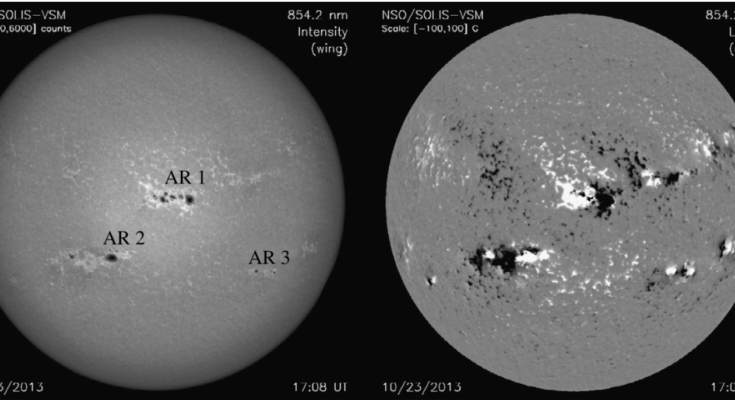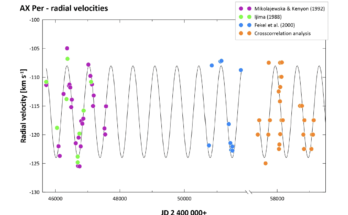Continue to article page to display article full-text.
Our Sun is a highly complex object made out of high-temperature rotating plasma, undergoing periodic cycles of activity. Despite the fact that compared to the majority of stellar types out there, our Sun belongs to the category which we generally consider to be “calm” and “average”, its activity must still be something that we concern ourselves with greatly. Stars similar to our Sun have been observed to produce enormous ejections of energy and mass, some of which could make our survival on Earth challenging if not outright impossible if one such event hit the Earth directly. Even though the Sun is our closest star, we still know embarrassingly little about it. We are not even close to fully understanding the processes which happen in the solar plasma. The fact that we cannot directly observe most of the Sun’s internal and atmospheric layers or send a probe to its close vicinity is not helping us on that quest. From the observations that we have, we can only create approximations about its composition and thermodynamic variations; we can tell very little about what exactly is causing these variations and how they will evolve in the future. At the same time, our lives directly depend on the Sun’s activity. Without a warning, a stronger solar storm can destroy satellites, electrically charge railways, corrode pipelines, overload transformers degrading power grids and even hinder radio communication. Just in 2012, a massive solar storm narrowly avoided the Earth – one which could have resulted in serious damage all over the globe as well as in space. Similar events in the past have created radio blackouts, destroyed satellite systems, caused power outages and hindered railway traffic. We must have a system to issue warnings about such events, despite not fully understanding how the physics that leads to them. In this paper, I make a short introduction into the physics of the solar plasma; the principles and laws governing its dynamics along with some of the assumptions that we currently make when resolving it. I also introduce one of the most important solar phenomena which we are still yet to sufficiently explain – the coronal heating problem – along with some of the proposed explanations by the different groups of physicists. Naturally, from this arises the discussion about how come that we still cannot explain phenomena such as this. I briefly touch upon some of the challenges that we face which are preventing us from fully resolving how the Sun works and from making predictions on its behaviour in the future. I conclude with an outlook highlighting some of the steps that we, as a community, must further undertake to help us understand the Sun and, by extension, to help us protect our society.
 Michaela Brchnelova is a PhD researcher at KU Leuven in Belgium at the Centre for Mathematical Plasma Astrophysics. She obtained her Master and Bachelor degrees in Aerospace Engineering with Cum Laude from Delft University of Technology in the Netherlands and has work experience from the European Space Agency (ESTEC) and the German Aerospace Centre. Currently, she works on creating global numerical models of the Sun and simulating plasma waves in its atmosphere.
Michaela Brchnelova is a PhD researcher at KU Leuven in Belgium at the Centre for Mathematical Plasma Astrophysics. She obtained her Master and Bachelor degrees in Aerospace Engineering with Cum Laude from Delft University of Technology in the Netherlands and has work experience from the European Space Agency (ESTEC) and the German Aerospace Centre. Currently, she works on creating global numerical models of the Sun and simulating plasma waves in its atmosphere.




